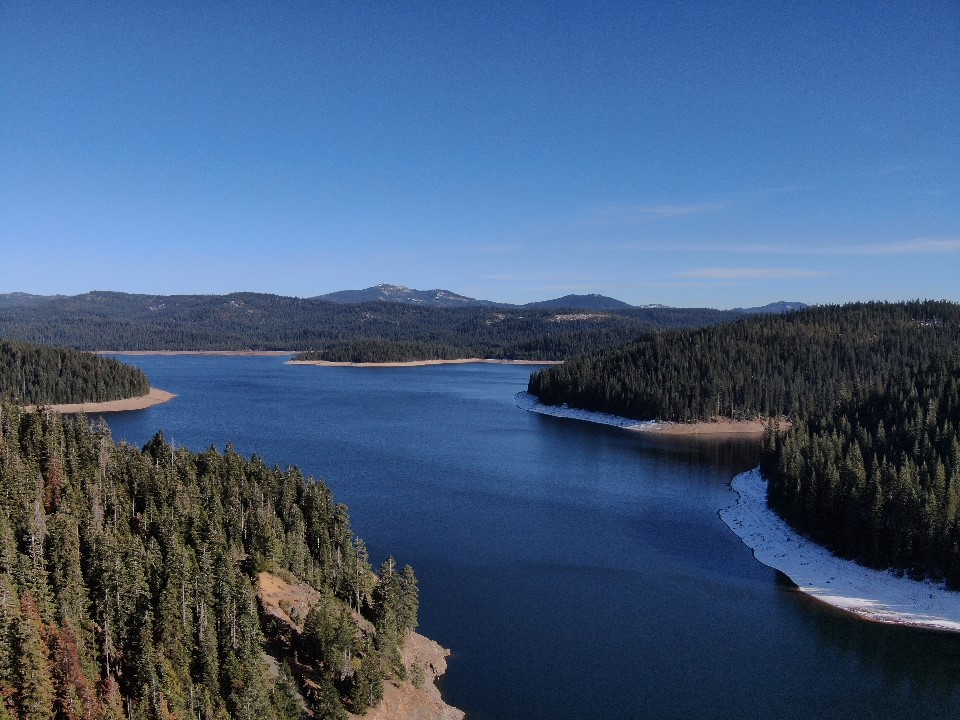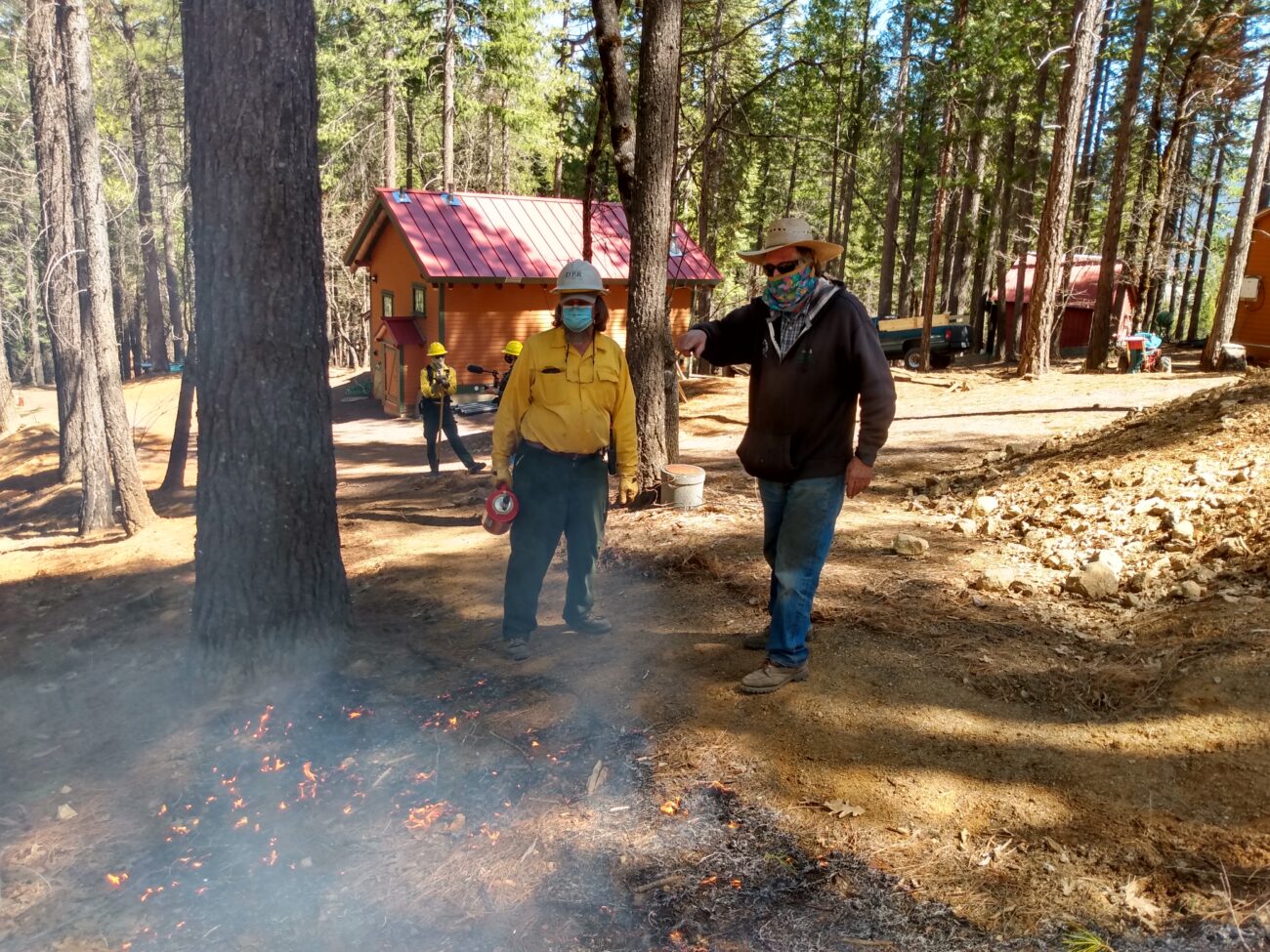
It is called the Little Grass Valley Reservoir Watershed Protection Project and it should have a big impact when it comes to protecting local communities and valuable water infrastructure from wildfire.
Much-needed fuels-reduction in Feather River Watershed
In an effort to safeguard the fourth largest water source in the Upper Feather River watershed and several small towns in the area, such as La Porte, the Sierra Nevada Conservancy (SNC) awarded $500,000 to the Plumas County Fire Safe Council to conduct fuels-reduction on nearly 730 acres around the reservoir. Working through record-shattering 2020 and 2021 wildfire seasons, the Plumas County Fire Safe Council completed the treatments in the fall of 2021.
This much-needed work was funded by Proposition 1: the Water Quality, Supply, and Infrastructure Improvement Bond Act, and is an important step in helping to protect a valuable water source and the hundreds of residences in the Little Grass Valley Reservoir region from high-severity wildfire.
The work builds on an earlier SNC grant to the Plumas National Forest to remove heavy fuels from 560 acres around other parts of the Little Grass Valley Reservoir. To date, almost 1700 acres of dense forest have been treated in the area. Going forward, the Plumas National Forest plans to conduct regular underburning to maintain forest health.

Despite North Complex Fire, crews treated extra 250 acres
The SNC-funded project originally focused on treating 480 acres of overly dense forest through mostly hand and mechanical thinning, but thanks to expenditures coming in lower than expected, crews were able to reduce fuels on an additional 248 acres. While it took almost three years to complete, mostly due to workers having to evacuate the area due to the 2020 North Complex Fire, the Little Grass Valley project was deemed a big success.
Partners in project development and implementation included the US Forest Service, the Feather River Stewardship Coalition, which is a joint partnership between the Plumas County Fire Safe Council and Plumas National Forest, and community members of Little Grass Valley area.

Project used for prescribed-fire-training exchange
Adding to the successful removal of the surplus of extra dead and dying fuels in the region was the inclusion of Cal-TREX training events that the Plumas National Forest hosted with the help of The Nature Conservancy, Plumas County Fire Safe Council, Feather River Resource Conservation District, and the Plumas Underburn Cooperative. As part of the four-day training, piles of woody debris were burned so participants could see firsthand how prescribed fire can be utilized across the landscape. The Cal-TREX program aims to build local capacity to assist the efforts of governmental agencies with pile burning and prescribed fire.
SNC funding wildfire risk reduction throughout the Sierra Nevada
The Little Grass Valley Watershed Protection Project is a good example of the kind of work that the SNC is investing in throughout the Sierra Nevada. In 2021, the SNC provided $19 million to 15 shovel-ready forest health and wildfire resilience projects, and doubled down with another $21 million in forest resilience and wildfire recovery grants to local partners this summer. Currently, the SNC is accepting concept proposals (deadline July 29, 2022) for another $23 million dollars in forest-health grants that will be awarded next year. The grants are part of an all-hands-on-deck effort by the state of California to combat an escalating wildfire crisis.

